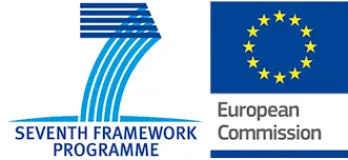NEED4B
Relevant project information
Dates
Project website
Role of CIRCE
Grant agreement number
Funded by

Description and objectives
NEED4B will develop a new, easily reproducible methodology for designing, constructing and operating new low energy buildings.
This methodology will be validated and enriched by the experience gathered in a series of demonstrator buildings constructed in 5 cities in different European countries. The buildings will test the feasibility of carrying out constructions with an energy consumption below 60kWh/m2 per year.
The variety of typologies and uses assigned to the buildings as well as their location in different climatic zones will help the project results to be applicable to any case all over Europe.
The 5 planned demonstrators will have the following characteristics:
- 2,068 m2 in Mons, Belgium: A sustainable neighborhood will be built, consisting of residential blocks, single-family homes, an old people's home, an internet café, and other types of tertiary service buildings.
- 5,214 m2 in Lecce, Italy: The new offices of one of the project partners will be built, sharing a building with a shopping center.
- 2,712 m2 in Zaragoza, Spain: Office and laboratory building for R&D.
- 314 m2 in Borås and Varberg, Sweden: Two single-family houses.
- 17,576 m2 in Istanbul, Turkey: A faculty will be built on a university campus.
It is expected that the measures implemented in the buildings will reduce CO2 emissions by 94% compared to the same standard building in which they would not have been applied.
NEED4B also expects to contribute to standards, regulations and policies related to energy efficiency in buildings at different levels, thanks to the experience gained in the demonstrators.
The project will create recommendations and guidelines adapted to different types of stakeholders: investors, developers, owner-users, architects, contractors, public authorities, standardization agents, political authorities, SMEs, etc.
Through the results of the project, these stakeholders will be able to adopt the new and innovative techniques, concepts and solutions, developed and demonstrated during the execution of the project.
In this way, the project will contribute to the promotion of the construction of new highly efficient buildings.
Value proposition
The overall objective of the project is to develop an open and easily replicable methodology for designing, constructing and operating new low-energy buildings in order to promote this market, which has great growth potential.
The set of constructed buildings aims to achieve energy consumptions of less than 60kWh/m2 and year (in terms of primary energy) representing a 65% reduction compared to current practices.
Achieving this goal will be possible thanks to the selection and integration of the most appropriate and innovative energy efficiency measures, solutions and techniques for each demonstrator, applied to all stages of the construction process.
Project partners
CIRCE, Vue Sur Mons S.A (Belgium), M5 s.a. (Belgium), Format D2 (Belgium), Université de Mons (Belgium), Intesa SanPaolo Eurodesk (Belgium), D'Appolonia (Italy), DIRCO S.R.L (Italy), Bg Mimarlik Musavirlik Ltd. STi (), FIBA Group (), Özyegin University (), Acciona (Spain), Ingeniería y control electrónico S.A. (Spain), Derome Hus AB (Sweden), SP Technical Research Institute of Sweden (Sweden).


